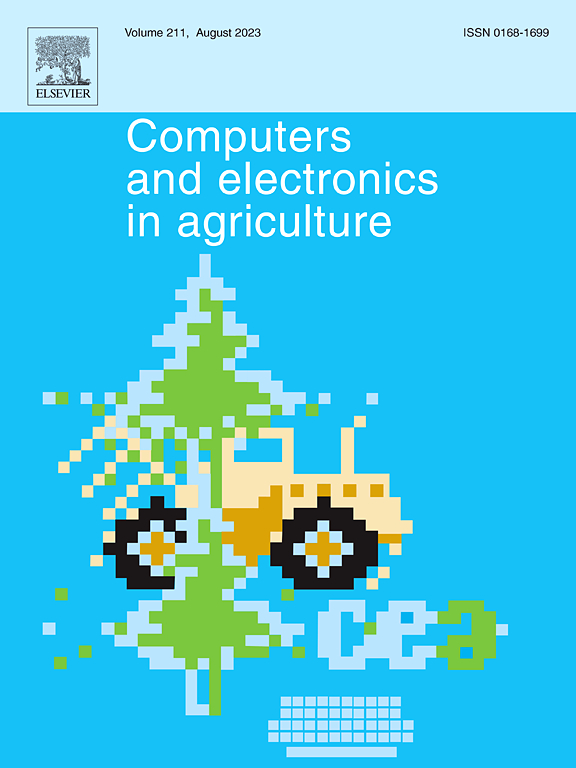Design and verification of a litchi combing and cutting end-effector based on visual-tactile fusion
IF 7.7
1区 农林科学
Q1 AGRICULTURE, MULTIDISCIPLINARY
引用次数: 0
Abstract
According to the characteristics of litchi tree branching and litchi fruit growing in clusters, this paper designs a litchi combing and cutting end-effector based on visual-tactile fusion with reference to human hair-cutting behavior. The litchi information in the image is perceived visually using the zero-sample prediction large model and the Hough circle detection principle, the tactile timing of the litchi fruit stem is captured by the tactile sensors between the clamping fingers, and the fruit stem clamping status is monitored through the tactile timing update mechanism, and finally the fusion at the decision-making level is realized by integrating visual and tactile in information, realizing the perception of the litchi fruit stem for the litchi picking robot. The picking trial results show that the static tactile fruit stem perception rate is only 16.7%, while the use of visual-tactile fusion increases the rate to 86.7%. The average of a single picking achieves 1.08 bunches. The end actuator and clamping and cutting picking method in this paper provide technical basis for efficient and low-loss litchi picking.
求助全文
约1分钟内获得全文
求助全文
来源期刊

Computers and Electronics in Agriculture
工程技术-计算机:跨学科应用
CiteScore
15.30
自引率
14.50%
发文量
800
审稿时长
62 days
期刊介绍:
Computers and Electronics in Agriculture provides international coverage of advancements in computer hardware, software, electronic instrumentation, and control systems applied to agricultural challenges. Encompassing agronomy, horticulture, forestry, aquaculture, and animal farming, the journal publishes original papers, reviews, and applications notes. It explores the use of computers and electronics in plant or animal agricultural production, covering topics like agricultural soils, water, pests, controlled environments, and waste. The scope extends to on-farm post-harvest operations and relevant technologies, including artificial intelligence, sensors, machine vision, robotics, networking, and simulation modeling. Its companion journal, Smart Agricultural Technology, continues the focus on smart applications in production agriculture.
 求助内容:
求助内容: 应助结果提醒方式:
应助结果提醒方式:


